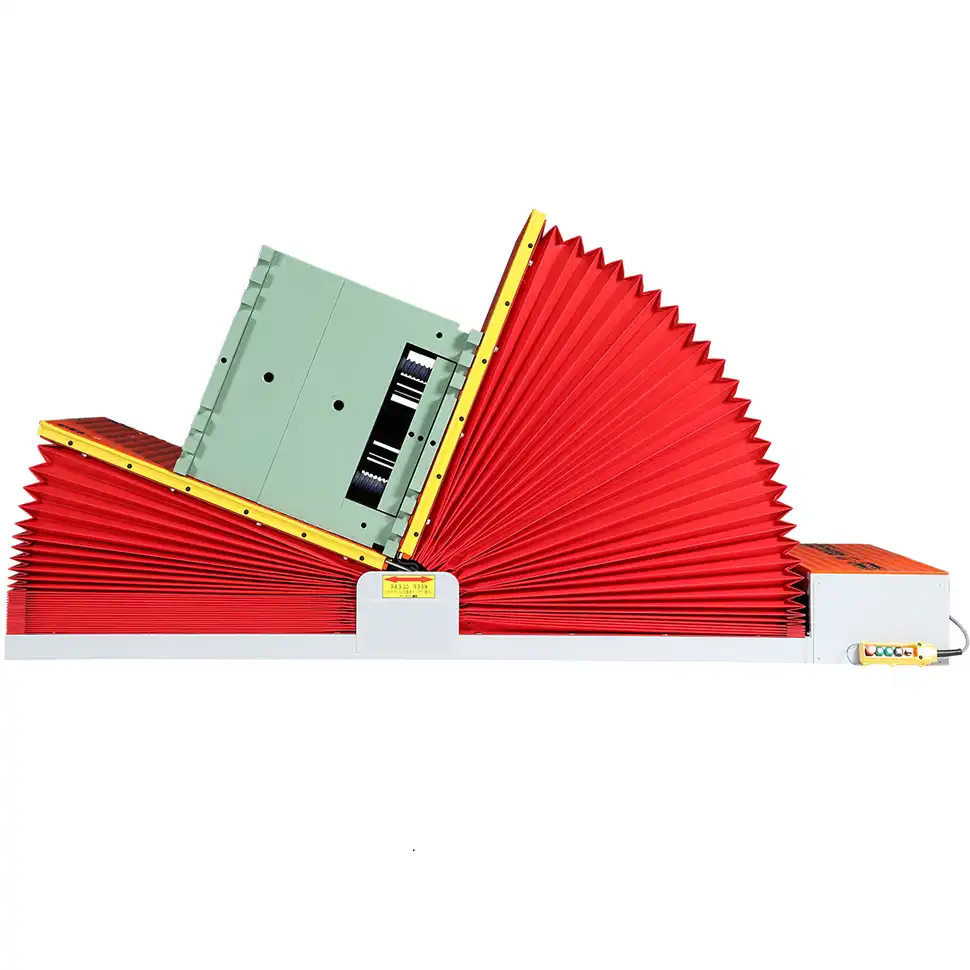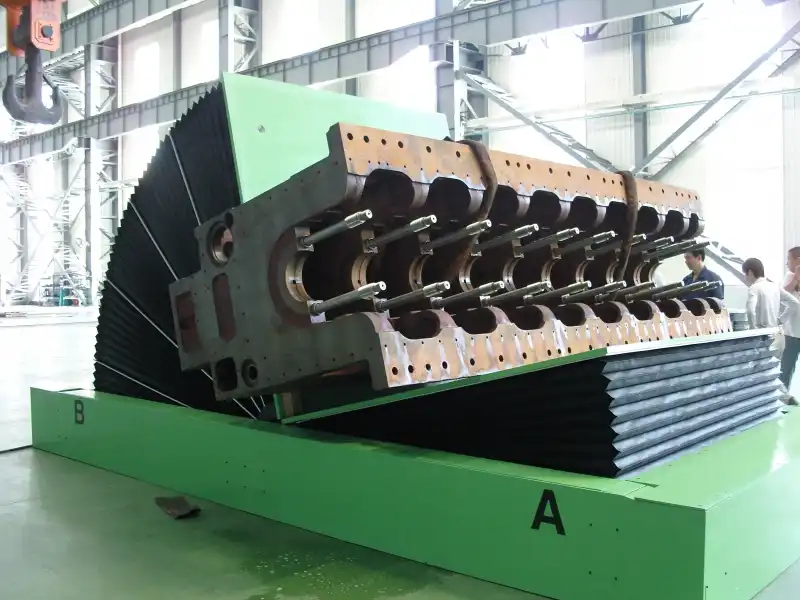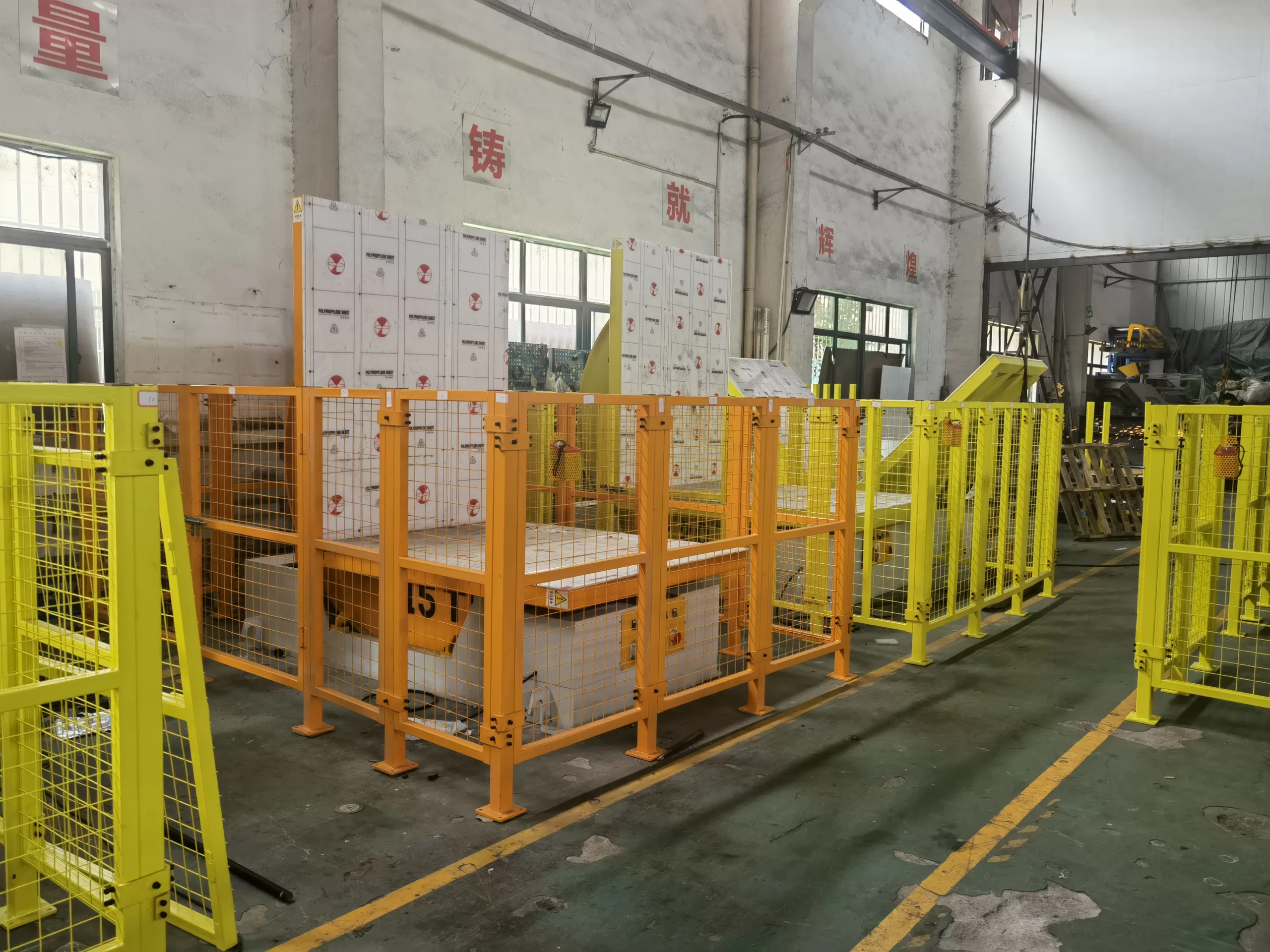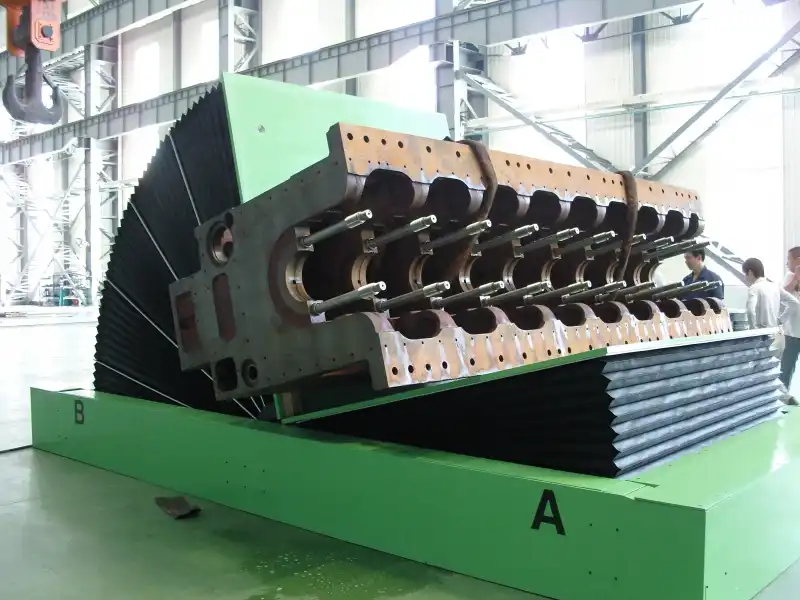Mold flipper: what integration basics matter for presses and lines in Saudi sites?
In Saudi Arabia's rapidly expanding industrial landscape, your press lines are running at full tilt to meet demand. But there is often a hidden bottleneck slowing you down: mold and die handling. Using old methods like cranes and chains to flip heavy molds is not just slow; it's incredibly dangerous. You've invested heavily in state-of-the-art presses, yet your changeover times are held back by a manual process that puts your team and your expensive equipment at constant risk. A single slip can lead to catastrophic damage, crippling downtime, and, worst of all, serious injuries.
For successful integration of a mold flipper into presses and lines at Saudi sites, the basics that matter most are mechanical alignment with existing equipment, electrical compatibility with power systems, seamless PLC and safety circuit integration, and robust data communication for modern production monitoring.

I understand the hesitation. As an engineer who built a factory from the ground up, I know that adding any new piece of equipment can feel like adding complexity. But this is different. When you get the integration right from day one, a mold flipper isn't just another machine. It becomes a strategic asset that protects your people, your equipment, and your bottom line. It transforms a major point of risk into a source of efficiency. Let’s break down the essential integration points you need to focus on to make that happen in your Saudi facility.
How can a mold flipper solve critical safety and efficiency issues in Saudi press shops?
Your press shop floor is a high-pressure, high-stakes environment. Every time a multi-ton mold is lifted and manually turned by a crane, there's a collective sense of anxiety. This unstable, manual method consumes valuable time and places your most experienced technicians in harm's way. You meticulously calculate the cost of downtime per minute, yet a single mold changeover can stretch into hours, creating a massive bottleneck that prevents you from achieving the agility needed in today's market. The constant worry about a dropped mold or a workplace injury is a heavy burden for any plant owner. A mold flipper systematically solves this by turning a risky, manual task into a controlled, repeatable, and safe engineering process.
A mold flipper directly solves safety and efficiency issues in Saudi press shops by replacing hazardous manual or crane-based turning with a secure, automated process. This cuts mold changeover times by over 50%, reduces labor requirements, and prevents costly damage to dies and presses, boosting overall operational uptime.

Deeper Dive: Beyond the Obvious Benefits
When we talk about mold flippers, the conversation often centers on speed and safety. These are crucial, but the true impact on your operation goes much deeper. As a factory owner, you need to understand the full picture to make an informed investment decision.
The Hidden Costs of Manual Handling
Manual or crane-based mold flipping carries costs that don't always appear on a standard balance sheet. These "hidden" costs can be significant.
- Near-Misses and Morale: For every reported accident, there are dozens of near-misses that go undocumented. These events create a culture of fear, increase stress, and lower team morale. A stressed and anxious team is not an efficient team.
- Micro-Damage to Molds: Even a successful manual flip can cause imperceptible damage. The shock and vibration from chains can misalign mold components or cause small cracks. Over time, this leads to quality issues in your stamped parts and shortens the lifespan of a very expensive asset.
- Increased Insurance Premiums: Your insurance provider assesses risk. A facility that relies on hazardous manual processes for heavy lifting will inevitably face higher premiums than one that has engineered the risk away with automated solutions.
Quantifying the Gains: A Clear Comparison
Let's look at the numbers. The difference is not marginal; it is transformative. This is the kind of data I use when analyzing an upgrade for my own facilities.
| Metric | Traditional Method (Crane & Chains) | Dedicated Mold Flipper |
|---|---|---|
| Average Changeover Time | 45 - 90 minutes | 5 - 15 minutes |
| Required Personnel | 2 - 3 skilled operators | 1 operator (can be less skilled) |
| Risk of Personnel Injury | High | Extremely Low |
| Risk of Mold/Press Damage | Moderate to High | Extremely Low |
| Process Repeatability | Low (depends on operator skill) | High (consistent every time) |
The Saudi Context: Heat, Pace, and Vision
In the context of Saudi Arabia, these benefits are amplified. The extreme ambient temperatures can lead to operator fatigue, increasing the likelihood of human error in a manual process. A controlled, automated system like a mold flipper is unaffected by these conditions. Furthermore, with the ambitious timelines of projects under Saudi Vision 2030, downtime is not an option. Your facility needs to be a model of efficiency and reliability. Integrating a mold flipper is a direct step towards aligning your operations with this national goal of industrial excellence.
What are the key mechanical and electrical integration points for a mold flipper?
You have made the decision and approved the purchase of a new mold flipper. The machine arrives at your facility in Saudi Arabia. Now, your engineering team faces the critical task of making it a true part of your production line. A simple misalignment or an incorrect power connection can quickly turn your strategic investment into a large, stationary obstacle on the factory floor. This is where projects can stall. You might see your team and the supplier's technicians debating about who is responsible. Production schedules get delayed, and you start to wonder if this was the right move. All this frustration can stem from overlooking a few basic integration details at the planning stage.
The key mechanical integration points for a mold flipper include foundation requirements for weight and vibration, precise alignment with press beds and die carts, and clearance for rotation. Key electrical points involve matching voltage and phase to the Saudi site's supply, ensuring proper grounding, and integrating motor controls with the line's power distribution system.

Deeper Dive: A Practical Checklist for Installation
I've seen firsthand how a little planning at this stage can prevent major headaches later. Let's treat this like a pre-flight checklist. Getting these things right ensures your new equipment can deliver on its promise from day one.
Mechanical Integration: The Physical Fit
This is about where and how the machine will live in your factory. It must coexist perfectly with its surroundings.
- Foundation First: A mold flipper is heavy, and the dynamic forces during rotation create significant loads. You must verify that the concrete floor in the designated area can support the machine's static weight plus the maximum weight of your mold. I had a client who skipped this step. The floor started to crack after a month, and they had to shut down the line, move the flipper, and re-pour the foundation. It was a costly and completely avoidable delay. Your supplier should provide detailed foundation load drawings.
- Workflow and Layout: How does the mold arrive at the flipper? How does it leave? The placement must make sense within your material flow. Whether you use an overhead crane, a forklift, or a dedicated die-change cart, the flipper must be positioned for seamless loading and unloading. Consider the swing radius; ensure there is ample clearance for the mold to rotate 90 or 180 degrees without hitting columns, walls, or other machinery.
- Precision Alignment: The flipper's table must be perfectly level and aligned with the height of your press bed or die cart. Even a few millimeters of misalignment can make it difficult to slide the mold, creating a new bottleneck and a safety hazard.
| Alignment Parameter | Recommended Tolerance | Why It Matters |
|---|---|---|
| Vertical Height (to Press/Cart) | +/- 2 mm | Prevents jarring and difficulty in transferring the mold. |
| Horizontal Levelness | < 1 degree | Ensures stability and prevents mold from wanting to slide. |
| Positional Placement | As per layout drawing | Ensures clear pathways and access for maintenance. |
Electrical Integration: The Power Connection
This is just as critical as the mechanical setup. An electrical mismatch can damage the machine's components or trip your plant's main breakers.
- Verify Your Power Supply: Most industrial sites in Saudi Arabia operate on a 380V, 60Hz, 3-phase system. However, you must always verify this at the exact connection point. Don't assume. The machine's electrical cabinet and motors must be specified to match your site's power.
- Circuit Protection: Ensure that the feed line to the mold flipper has the correctly sized circuit breaker or fuses as specified by the manufacturer. This protects both your investment and your facility's electrical grid.
- Grounding: Proper grounding is a non-negotiable safety requirement. It protects your operators from electric shock and the machine's sensitive electronics from power surges.
Why is PLC and control system compatibility so crucial for seamless line integration?
Your new mold flipper is bolted to the floor and wired up. It runs perfectly using its own standalone control panel. But it exists in a bubble. It has no idea what your main press is doing, and the press has no idea what the flipper is doing. This creates a disjointed process where operators have to manage two separate systems, leading to inefficiency and dangerous safety gaps. You might worry that the press could start its cycle while the mold is still being positioned, or a die cart could move at the wrong time. This communication breakdown prevents you from achieving a truly automated and "smart" production line.
PLC and control system compatibility is crucial because it enables unified control, interlocking safety signals, and data exchange. A compatible system allows the press line to know the flipper's status (e.g., 'cycle complete,' 'fault'), preventing dangerous movements and enabling automated sequences for mold changes, which directly supports goals like digitalization and increased uptime.

Deeper Dive: Making Your Machines Talk to Each Other
True integration happens at the control level. This is what separates a standalone machine from a component in a high-performance system. For a forward-thinking manager like you, this is the key to unlocking digitalization and data-driven improvements.
The Language of Automation: Communication Protocols
PLCs (Programmable Logic Controllers) are the brains of modern machinery. For them to work together, they must speak the same language, or have a translator.
- Common Languages: In the industrial world, these languages are called communication protocols. Common examples include PROFINET, EtherNet/IP, and PROFIBUS. Before you purchase a mold flipper, you must identify the exact PLC brand (e.g., Siemens, Allen-Bradley) and communication protocol used on your press line.
- Supplier Responsibility: Your machine supplier must confirm they can provide the flipper with a compatible PLC and communication card. This is a simple request, but it's one of the most important questions you will ask. A good partner will ask you this before you ask them.
Safety Through Communication: The Power of Interlocks
An interlock is a simple but powerful concept: it's a signal that prevents one machine from doing something until it gets an "all-clear" signal from another. This is the foundation of automated safety.
| Example Interlock Signal | Direction | Meaning / Action |
|---|---|---|
Press_Ready_For_Mold |
Press to Flipper | The press is in a safe state, ready to receive the mold. Allows the flipper to start its transfer-out sequence. |
Flipper_In_Cycle |
Flipper to Press | The flipper is currently rotating or moving. The press controller must prevent any press or die cart movement. |
Mold_Secured_In_Press |
Press to Flipper | The mold is now clamped in the press. The flipper is now free to return to its home position. |
Flipper_System_Fault |
Flipper to Press | The flipper has a problem. The press line controller should initiate a safe stop and alert the operator. |
Data: The Fuel for Digital Transformation
Your goal to deploy MES, IoT sensors, and data analytics is exactly the right strategy for the future. A properly integrated mold flipper can be a valuable source of data. The same communication link used for safety interlocks can be used to send vital information to your central SCADA or MES platform. You can monitor:
- Cycle times: Are your changeovers getting faster or slower?
- Motor current: A gradual increase can signal a future mechanical problem (predictive maintenance).
- Fault codes: Instantly know the exact nature of any problem.
- Number of cycles: Schedule maintenance based on actual usage, not just time.
This data transforms the flipper from a black box into a transparent part of your production system, helping you achieve your goals of 95% uptime and reduced operating costs.
What future-proofing considerations should Saudi managers evaluate before purchase?
You are on the verge of signing the purchase order for a new mold flipper. It meets all of today's requirements. But what about the needs of your factory five, or even ten, years from now? The fear of investing in a piece of equipment that could become a dead end is a valid concern for any strategic leader. You have likely seen it before: a machine that cannot be upgraded, cannot connect to newer systems, or cannot handle the larger, more complex molds your business will need as it grows. It eventually becomes a constraint that limits your potential.
Before purchase, Saudi managers should evaluate future-proofing considerations like the mold flipper's maximum load capacity and size for future molds, the scalability of its control system for future automation, its IoT-readiness for data analytics, and the long-term availability of local service and spare parts within the Kingdom.

Deeper Dive: Buying for Tomorrow, Not Just Today
Thinking about the future during the procurement process is the difference between simply buying a machine and making a long-term strategic investment. It is about ensuring that your purchase will continue to deliver value as your business evolves and as technology advances.
Scalability: Don't Box Yourself In
The products you manufacture in the future may require larger or heavier molds.
- Capacity Buffer: A rule of thumb I always follow is to purchase a flipper with at least 20-30% more weight capacity than your heaviest current mold. The marginal cost increase for a higher capacity model is small compared to the cost of replacing the entire machine in five years because you've outgrown it.
- Table Dimensions: Consider the physical footprint (length and width) of your future molds. Ensure the flipper's table is large enough to accommodate them. Discuss your company's growth plans and product roadmap with potential suppliers.
Connectivity: Preparing for Industry 4.0
The industrial world is moving towards total connectivity. Your equipment choices must reflect this.
- IoT-Readiness: This is a term you should use. Ask the supplier: "Is this machine IoT-ready?" In practical terms, this means it should have a modern PLC and an available Ethernet port. Its control system should support open communication protocols (like OPC-UA) that make it easy to share data with other systems.
- Alignment with Saudi Vision 2030: Saudi Arabia's national strategy places a heavy emphasis on technological adoption and building smart factories. Ensuring your new equipment is ready for this digital future is not just good business; it's aligning your factory with the country's economic direction.
The Human Factor: Long-Term Partnership and Support
A machine is only as good as the support structure behind it. This is especially true when operating in a specific region like Saudi Arabia.
- Local Presence: Does the supplier have a local or regional service presence? When you need urgent technical support, you cannot afford to wait for a technician to fly in from another continent.
- Spare Parts Availability: How quickly can you get critical spare parts? Ask if they maintain a stock of common parts (sensors, motors, hydraulic components) within the GCC region. Downtime spent waiting for a small part to clear customs is incredibly expensive.
- Training and Documentation: Ensure the supplier can provide comprehensive training for your operators and maintenance staff, ideally in both English and Arabic. Clear, detailed documentation is essential for self-sufficiency.
Choosing a supplier who understands these long-term needs is how you find a true strategic partner, not just a vendor. This is the kind of relationship that will help your business thrive for years to come.
My Perspective as an Engineer and Founder
I didn't just build a company; I built it on a foundation of solving the real-world engineering problems I faced on the factory floor. The integration of a machine like a mold flipper is a perfect example of this. It’s a puzzle with mechanical, electrical, and software pieces.
I remember a client in the steel industry, a practical leader much like Javier Morales. He was struggling with long changeover times and had a near-miss incident with a crane that really shook his team. When he decided to invest in a mold flipper, his initial focus was purely on the machine's price and capacity. He was treating it like a commodity.
From my own journey, starting as an engineer and later building my own factory, I knew this was a mistake. The biggest error I see managers make is treating a mold flipper as a simple, isolated purchase. It is not. It is a system integration project. The machine has to work perfectly with the equipment that comes before it and after it.
I explained to him that the right supplier won't just ask about his current mold weight. They will ask to see his factory layout. They will ask what PLC his presses use. They will ask about his five-year growth plan. They will want to understand his entire process. A transaction is about today's price; a partnership is about tomorrow's success. We ended up working together, and the focus shifted from just buying a machine to co-designing a solution. That is the kind of thinking that helped me achieve my own success, and it's the knowledge I want to share.
Conclusion
Proper mold flipper integration is a strategic decision. It boosts safety, efficiency, and future-readiness. Focus on mechanical, electrical, and control compatibility to unlock your press line’s full potential.





